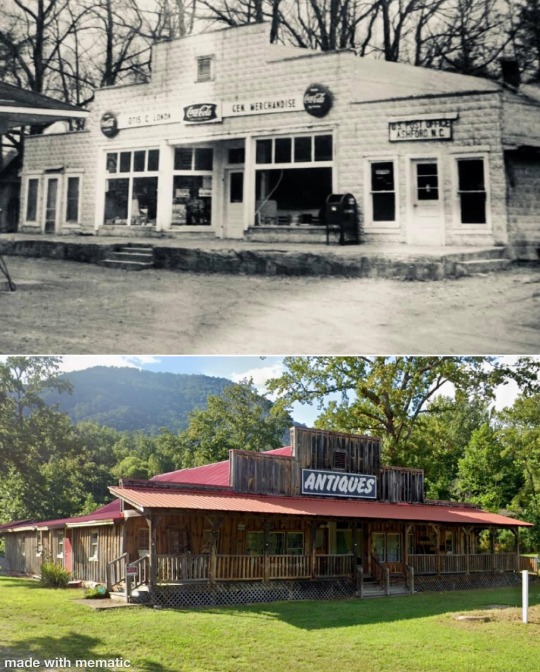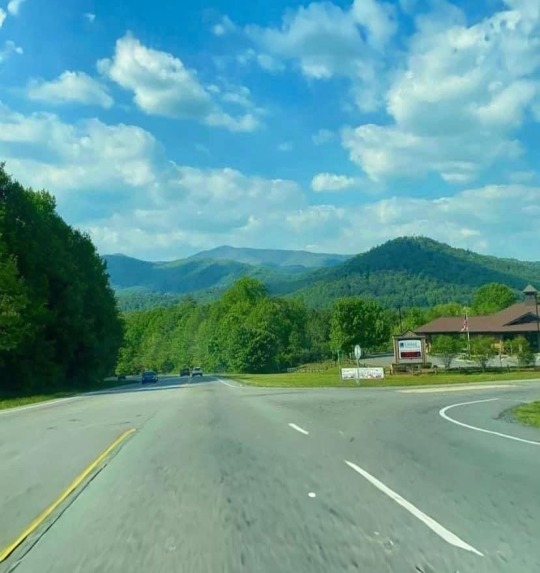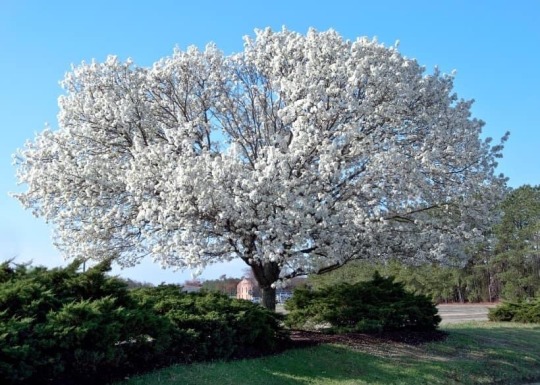Text

Circa 1960’s- Split Rock at Grandfather Mountain in Avery County, NC.
This huge split in the rock is due to weathering over millions of years that resulted in small cracks in the rock due to the formation of ice. After repeated freezing and thawing, the split grew to its current size.
Split Rock likely formed in an ancient riverbed in a mountain formation older than the Appalachians through millions of years of stone and sediment deposits. It is believed that it once resided at a much higher elevation when Grandfather Mountain was as tall as the Himalayas before tumbling down eons ago to its current location.
For generations, guests of Grandfather Mountain have loved taking photos and capturing the split in the rock.
*Information from Grandfather Mountain via https://grandfather.com/split-sphinx/
(Photo by Hugh Morton, UNC Chapel Hill)
#appalachian#appalachian mountains#north carolina#appalachian culture#western north carolina#appalachia#the south#nc mountains#avery county nc#averycounty#rock
1 note
·
View note
Text

This was Aden Wiseman’s corn mill located on Hwy 221 North in the North Cove community in McDowell County, North Carolina. It’s across from Swofford Road and near Mountain Paradise Campground & Waterslide. There was once a store beside of this building and it was owned by Earl Wiseman.
The corn mill operated in the 1940’s and 50’s. The community brought their corn here to be ground on Saturday mornings. Grando Wiseman remembers the taste of the warm cornmeal as it came out of the chute.
#appalachian#appalachian mountains#north carolina#appalachian culture#western north carolina#appalachia#the south#nc mountains#mcdowell county#mcdowellcounty#abandoned#old building#buildings
3 notes
·
View notes
Text

Then and Now: 1969 and 2023.
The Otis Lonon Store and Post Office was located near the railroad underpass on Hwy 221 North in McDowell County, North Carolina in the Ashford-North Cove community.
Clarence W. Wiseman built this store building in 1927. The main, central part of the building held Wiseman's General Store, which carried a wide array of items and served as a local polling place during elections. The northern end of the building originally held the Ashford Post Office. A separate corn mill building, no longer standing, stood to the store's rear.
During World II, the store was run by Mac Lonon. After the war, Otis Lonon took over its operation. He ran the store until its closing in 1971.
Once the hallmark of many small communities, the old general store was more than just a store, it was a gathering place. If you close your eyes you can almost hear the conversations and the laughter that people once had here. It was once so important to the community.
My Granny, Mildred Wiseman Carpenter, was once the post master here for a time.
(By Kim Wright. Information from https://files.nc.gov/ncdcr/historic-preservation-office/PDFs/ER_93-8667.pdf. Photo by Van Lonon and K Wright)
#appalachian#appalachian mountains#north carolina#appalachian culture#western north carolina#appalachia#the south#nc mountains#mcdowell county#mcdowellcounty#post office#old building
4 notes
·
View notes
Text

Western North Carolina generally consists of 29 counties, that when combined form a total regional area of roughly 13,000 square miles and is roughly the size of the state of Massachusetts.
There are 82 mountain peaks between 5,000 and 6,000 feet in elevation in western North Carolina and 43 peaks rise to over 6,000 feet.
Among the subranges of the Appalachian Mountains located in western North Carolina are the Great Smoky Mountains, Blue Ridge Mountains, South Mountains, Brushy Mountains, Great Balsam Mountains, Great Craggy Mountains, the Plott Balsams, and the Black Mountains.
Mount Mitchell, in the Black Mountains, is, at 6,684 feet, the highest point in eastern North America.
The major rivers in the region include the French Broad River, Nolichucky River, Watauga River, Little Tennessee River, and Hiwassee River flowing into the Tennessee River valley; the New River flowing into the Ohio River valley; and the headwaters and upper valleys of the Catawba River, Yadkin River, Broad River, and Saluda River flowing through the foothills towards the Atlantic.
The Eastern Continental Divide runs through the region, dividing Tennessee-bound streams from those flowing through the Carolinas.
The counties commonly included in the region are as follows:
Alleghany County
Ashe County
Avery County
Buncombe County
Burke County
Caldwell County
Cherokee County
Clay County
Graham County
Haywood County
Henderson County
Jackson County
Macon County
Madison County
McDowell County
Mitchell County
Polk County
Rutherford County
Swain County
Transylvania County
Watauga County
Wilkes County
Yancey County
-Other counties that fall under various definitions of Western North Carolina include: Alexander County, Catawba County, Cleveland County, Surry County and Yadkin County.
*Pictured is the Linville Gorge in Burke County, North Carolina by Wildwood Blessings Photography
#appalachian#appalachian mountains#north carolina#appalachian culture#western north carolina#appalachia#the south#nc mountains#linville north carolina
37 notes
·
View notes
Text

Who Remembers…
Charles Chips was a snack food company known for delivering tins of potato chips and other snacks directly to customers' homes. The company was popular in the mid-20th century, and its delivery service was a unique and convenient way for customers to enjoy their snacks.
Charles Chips developed a loyal customer base and became a nostalgic icon for many people.
•You can still order them online
(-Kim Wright)
24 notes
·
View notes
Text

Burgin Tunnel in Old Fort in McDowell County, North Carolina taken from the Point Lookout Trail.
There are 13 miles of winding loops and 7 tunnels on the railroad between Old Fort and Ridgecrest. It is still an active railway.
•2023
#appalachian#appalachian mountains#north carolina#western north carolina#appalachia#the south#nc mountains#mcdowell county#mcdowellcounty#railroad#train tunnel#tunnel
14 notes
·
View notes
Text

In Spite Of Its Name, The New River Is One Of The Oldest In The World And One Of A Few That Flows North!
With its headwaters beginning near Blowing Rock, North Carolina, the New River runs through Virginia into West Virginia. It is actually thought by many to be one of the oldest rivers in the world.
The New River lies within the Blue Ridge province of the Appalachian Mountain System. The presence of ancient lava flows and other volcanics that now appear as amphibolite ledges and cliffs along the South Fork of the New River are some of the most scenic and unique geologic features.
The New River flows through some of the oldest rocks in the United States. Radiometric dating methods have placed the age of some of these rocks near 1.1 billion years old. In addition to their extreme age, these rocks are quite complex having all undergone metamorphosis two or three times in the past.
*Pictured is the New River near West Jefferson, North Carolina by Friends NERI.
•Read more about The New River at: https://www.thetravel.com/whats-so-special-about-the-new-river/
4 notes
·
View notes
Text

Something about the mountains is just good for the soul. 💙
•Spruce Pine, North Carolina in Mitchell County
#appalachian#appalachian mountains#north carolina#appalachian culture#western north carolina#appalachia#the south#nc mountains
31 notes
·
View notes
Text

The Black Mountains are a mountain range in western North Carolina. They are part of the Blue Ridge Province of the Southern Appalachian Mountains. The Black Mountains are the highest mountains in the Eastern United States. The range takes its name from the dark appearance of the red spruce and Fraser fir trees that form a spruce-fir forest on the upper slopes which contrasts with the brown (during winter) or lighter green (during the growing season) appearance of the deciduous trees at lower elevations. The Eastern Continental Divide, which runs along the eastern Blue Ridge crest, intersects the southern tip of the Black Mountain range.
The Black Mountains are home to Mount Mitchell State Park, which protects the range's highest summits in the central section of the range. Much of the range is also protected by the Pisgah National Forest. The Blue Ridge Parkway passes along the range's southern section, and is connected to the summit of Mount Mitchell by North Carolina Highway 128. The Black Mountains are mostly located in Yancey County, although the range's southern and western extremes run along the Buncombe County line.
While the crest of the Black Mountain range is just 15 miles long, within these fifteen miles are 18 peaks climbing to at least 6,300 feet above sea level. The Black Mountains rise prominently above the surrounding lower terrain. This is particularly noticeable from the range's eastern side, which rises over 4,500 feet above the Catawba River Valley and Interstate 40, providing some impressive mountain scenery.
*Pictured is the Black Mountain Range at Sunset from atop the overpass on I-40 at Dysartsville Road in Burke County, NC. The impressive Black Mountain Range to the west dominates the horizon at sunset.
(Photo by Carolina Vann)
-Edited to add: The “Black Mountain Range” is not to be confused with the town of Black Mountain, North Carolina that’s located in Buncombe County.
#appalachian#appalachian mountains#north carolina#appalachian culture#western north carolina#appalachia#the south#nc mountains#black mountain#north carolina mountains
10 notes
·
View notes
Text

#appalachian#appalachian mountains#north carolina#appalachian culture#western north carolina#appalachia#the south#memories
18 notes
·
View notes
Text

The Linville Gorge in Burke County, North Carolina
#appalachian#appalachian mountains#north carolina#appalachian culture#western north carolina#appalachia#the south#nc mountains#linville north carolina
6 notes
·
View notes
Text

Avery County, North Carolina on Stamey Branch Road in the Altamont community.
#appalachian#appalachian mountains#north carolina#appalachian culture#western north carolina#appalachia#the south#nc mountains#avery county nc
3 notes
·
View notes
Text

Mill Creek and the Mill Creek Railroad Bridge in McDowell County, North Carolina in Old Fort near Andrews Geyser.
#appalachian#appalachian mountains#north carolina#appalachian culture#western north carolina#appalachia#the south#nc mountains#mcdowell county#mcdowellcounty
5 notes
·
View notes
Text

When you’re very small, running barefoot through damp grass on a summer evening, honeysuckle’s scent beckons like fireflies. It’s an alluring smell that, on the scale of things that will someday make you weep with longing, is somewhere between a magnolia blossom and your mother’s best perfume.
First, you pull off a creamy white or pale yellow flower. Then you hold it with the green base up. You carefully tug off the little green cap and draw out the single thread of the stamen. If you’re lucky and the fairies are with you, you’ll be rewarded with a drop of nectar, a small sip of sweetness, hanging on the end of the thread.
It’s a joy best savored by the young and patient, those with mouths so small and taste buds so fresh that the little drop seems as big and sweet as a Nik-L-Nip, those wax bottles of colored sugar syrup.
It’s like God loved Southern children so much, he draped the woods with a candy counter, free for the taking, proof that life will always be delicious and full of promise.
And then, inevitably, we grow up. As we get larger, tiny pleasures like honeysuckle blossoms don’t seem like such a big deal anymore. We get lives and yard work and mortgages, and we discover that not everything lovely is carefree.
• • •
The honeysuckle that festoons our woods is Japanese honeysuckle, and it’s an outsider here, an invader that pushed its way in, like kudzu and wisteria, those other vines that came from the outside and stayed to color the Southern landscape. Honeysuckle is not supposed to be here. It’s just another visitor that dropped by and liked it here too much to leave.
This rampant vine, first brought from its native Japan to U.S. shores on Long Island, New York in 1806, absolutely loves the Eastern climate. Propagating by berries spread by birds as well as running rhizomes, it proceeded to conquer just about all of the woodlands, roadsides, wetlands, and disturbed areas east of the Mississippi River. It invaded Texas, Arkansas, Louisiana, and Missouri too.
Like most vines, Japanese honeysuckle is programmed to grow and spread and never stop. If it has nothing to climb, it creeps along the ground until it does. When it does, it twines around it until it reaches the top and then starts looking for something else to climb. It will readily reach the top of a 100-foot-tall tree. If it twines around a young tree, it can literally strangle it to death. As it travels from tree to tree in the woods, it forms impenetrable thickets.
There are some uses and benefits to honeysuckle though. Mainly regarded in traditional Chinese medicine, the Honeysuckle has long been used as a natural home remedy to treat inflammation, stomach upset, upper respiratory infections, fever and more.
•Learn more about the benefits of honeysuckle at: https://www.greenshieldorganic.com/honeysuckle-benefits-and-uses/
(by Kathleen Purvis)
#appalachian#appalachian mountains#north carolina#appalachian culture#western north carolina#appalachia#the south#nc mountains#mcdowell county#mcdowellcounty
31 notes
·
View notes
Text

The old Tarheel Mica Plant in the Plumtree community in Avery County, North Carolina
#appalachian#appalachian mountains#north carolina#appalachian culture#western north carolina#appalachia#the south#nc mountains#avery county nc#abandoned
18 notes
·
View notes
Text

🌸Facts About The Dogwood Tree:
•The dogwood is the state tree of Virginia, Missouri and North Carolina, and is also Virginia’s state flower.
•There are over 50 species of the dogwood tree.
•Native Americans planted their crops, particularly corn, when the dogwoods bloomed.
•Native Americans used the root of dogwood to attract muskrats into the traps.
•The name Dogwood comes from the word “dog-tree”, which was introduced into English in 1548. Dogwood is also thought to derive from “dagwood”, which would involve using the tree’s thin twigs for creating daggers.
•In the Victorian Era, young men used to present dogwood flowers to unmarried women to convey affection. If the woman kept the flower, it was considered a sign of mutual interest! Women who wanted to convey indifference used to return the flower!
•Dogwoods have been used medicinally for generations; the bark is rich in tannins, so ground bark or leaves are used to treat pain, fevers, backaches, dizziness, weakness, excessive sweating, uterine bleeding, and incontinence.
•Dogwood plays an important role in traditional Chinese medicine where it is used in the treatment of dizziness, weakness, pain in the knees and back, uterine bleeding, and excessive sweating.
•Dogwood flowers are not "true" flowers. White petals are actually bracts, modified leaves that surround centrally positioned miniature yellowish-green flower heads. Each flower head consists of 20 to 30 individual flowers.
•Wood obtained from the tree is quite hard and strong and is hence used to make different types of tools, such as walking canes, loom shuttles, etc.
#dogwood#facts#fun facts#appalachian#appalachian mountains#north carolina#appalachian culture#western north carolina#appalachia#the south#nc mountains#mcdowell county#mcdowellcounty
18 notes
·
View notes
Text

We have about forgotten that families walked to town in the heat or cold, that old men squatted to roll their own with Prince Albert from a tin, that farm folks napped in the midday heat in the shade of trees, children played with things they made from stuff they found, little ones dug doodlebugs, folks dug bait to fish the creeks, shelled peas and beans under the shade of a tree, milked a cow every day rain or shine, canned food, and did too many things that were hard, and hoped for the day when they didn’t need to do so and lived to miss it all and 'pine for the day.
(Photo of the Harrell House in Mitchell County, North Carolina by Josh Smith, 2022)
#appalachian#appalachian mountains#north carolina#appalachian culture#western north carolina#appalachia#the south#nc mountains
46 notes
·
View notes